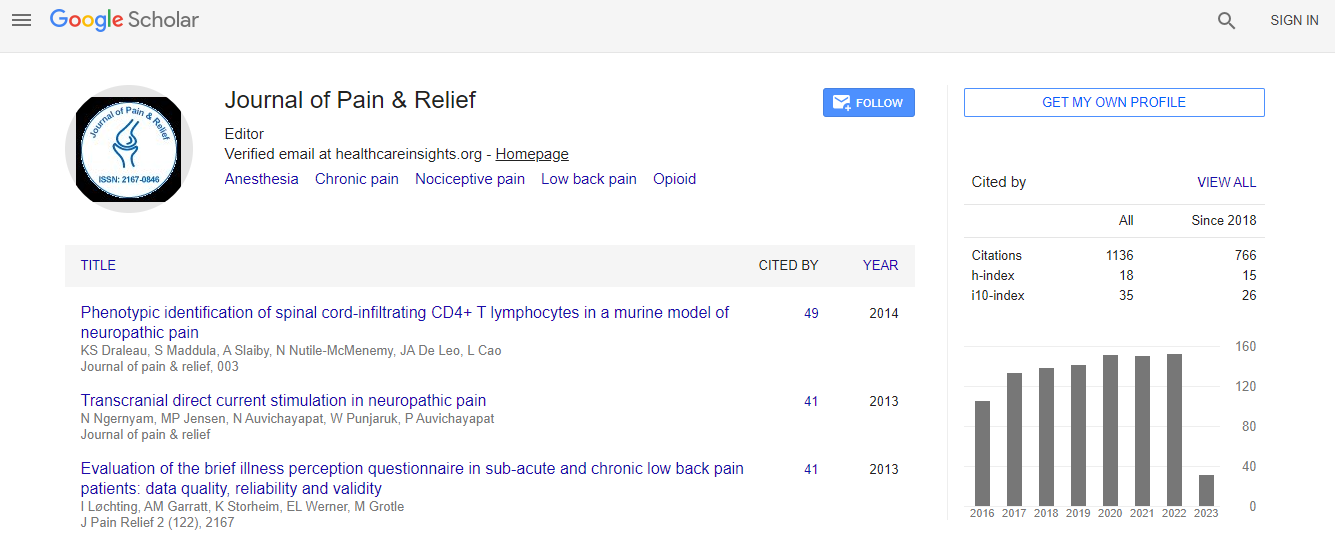Our Group organises 3000+ Global Conferenceseries Events every year across USA, Europe & Asia with support from 1000 more scientific Societies and Publishes 700+ Open Access Journals which contains over 50000 eminent personalities, reputed scientists as editorial board members.
Open Access Journals gaining more Readers and Citations
700 Journals and 15,000,000 Readers Each Journal is getting 25,000+ Readers
Google Scholar citation report
Citations : 1583
Journal of Pain & Relief received 1583 citations as per Google Scholar report
Journal of Pain & Relief peer review process verified at publons
Indexed In
- Index Copernicus
- Google Scholar
- Open J Gate
- Genamics JournalSeek
- Cosmos IF
- RefSeek
- Hamdard University
- EBSCO A-Z
- OCLC- WorldCat
- Publons
- Geneva Foundation for Medical Education and Research
- Euro Pub
- ICMJE
Useful Links
Recommended Journals
Related Subjects
Share This Page
Neuropathic pain in cancer patients
2nd International Conference and Exhibition on Pain Medicine
Ankita Mehta
Thomas Jefferson University Hospital, USA
Posters & Accepted Abstracts: J Pain Relief
Abstract
Neuropathic pain is prevalent in many cancer patients. Clinicians have found treating neuropathic pain challenging especially with minimal research specifically evaluating treatment of neuropathic pain in cancer patients. This retrospective chart analysis was done to see which therapeutic options were most effective in treating neuropathic pain in cancer patients within a 72-hour period from the beginning of the intervention. A retrospective chart analysis was done using the hospital database of pain management consults. It was determined that the pain was neuropathic in nature. Follow up consults were reviewed to determine if the patient felt their pain was alleviated and what medications were used. Of the 495 patient databases, 42 patients were found to have neuropathic pain. Thirty-eight percent required only opioids for neuropathic pain related to a cancer diagnosis, while more than half of the patients required both opioids and neurotransmitter modulators. In cancer patients who had neuropathic pain resistant to opioids such as morphine or hydromorphone, methadone was useful. As the literature has supported, this chart analysis found the best single agent treatment option for neuropathic cancer pain was an opioid. There was variability in the approach used for pain control, but using both neurotransmitter modulators and opioids combined was superior. This is unique to neuropathic pain related to cancer given that neuropathic pain secondary to other etiologies responds more effectively to neurotransmitter modulators and are less responsive to opioids. To achieve effective pain control there may be utility in creating an algorithmic approach specific to neuropathic cancer pain.Biography
Email: axm309@jefferson.edu

 Spanish
Spanish  Chinese
Chinese  Russian
Russian  German
German  French
French  Japanese
Japanese  Portuguese
Portuguese  Hindi
Hindi 
